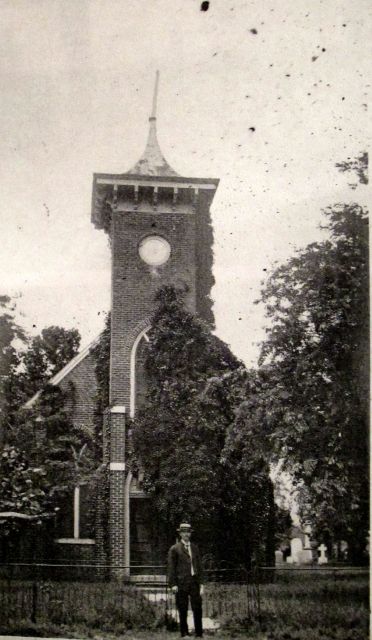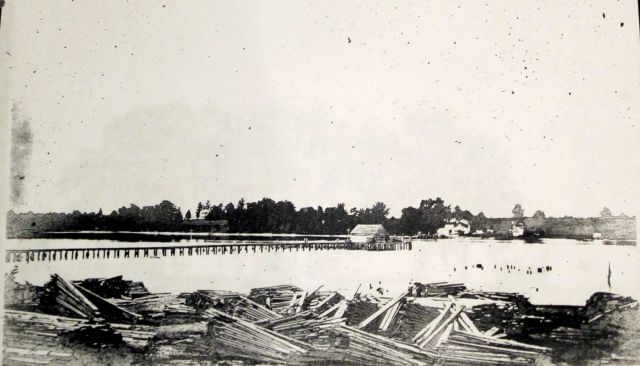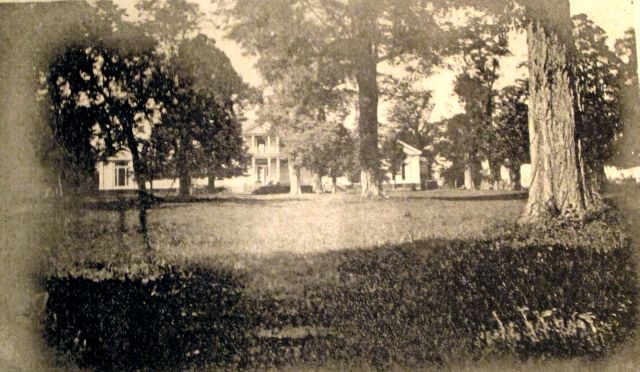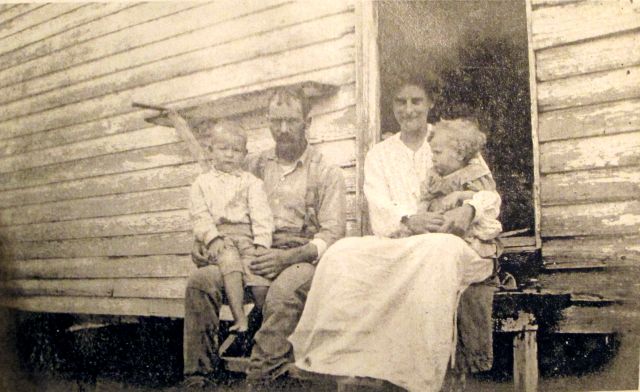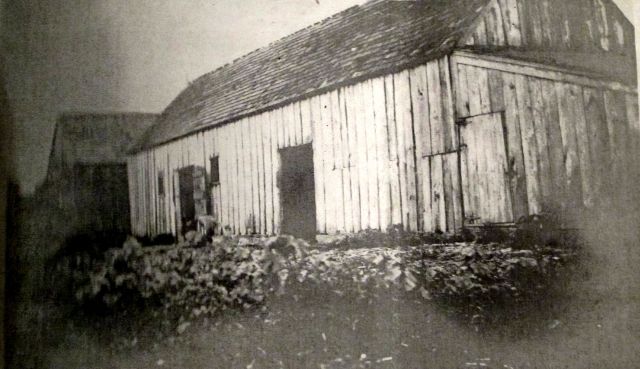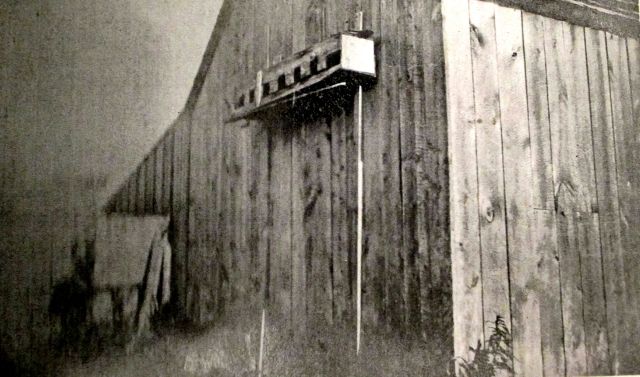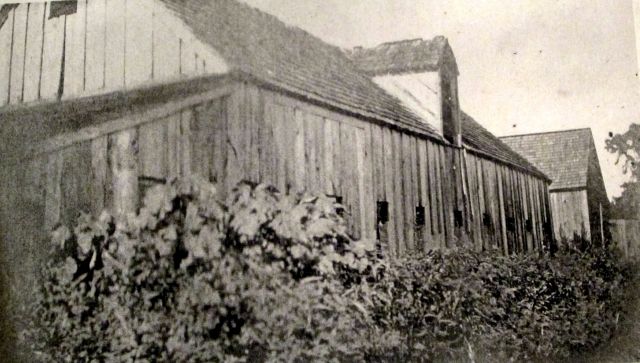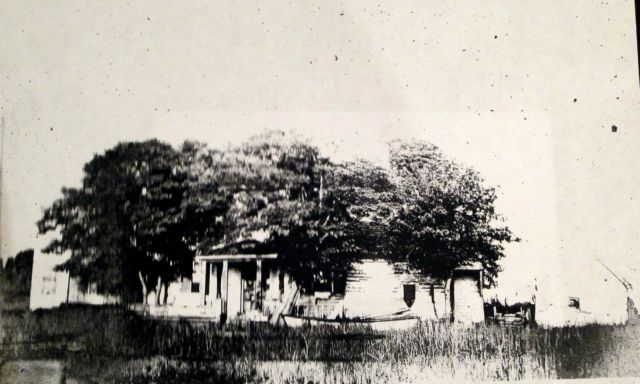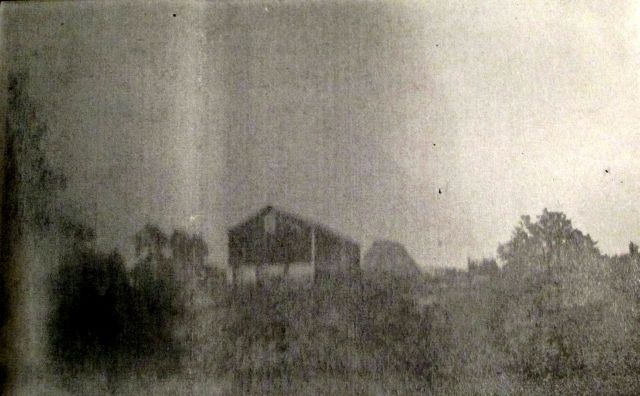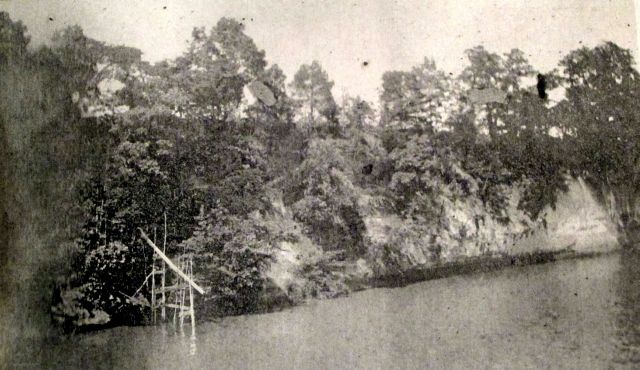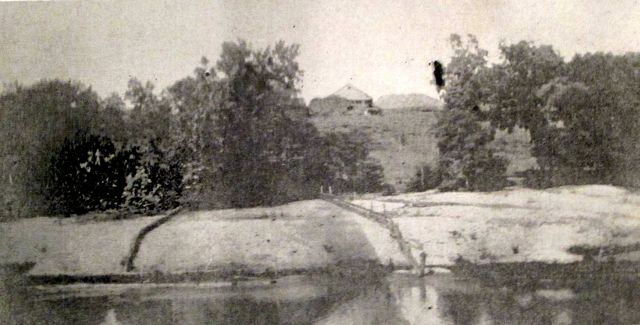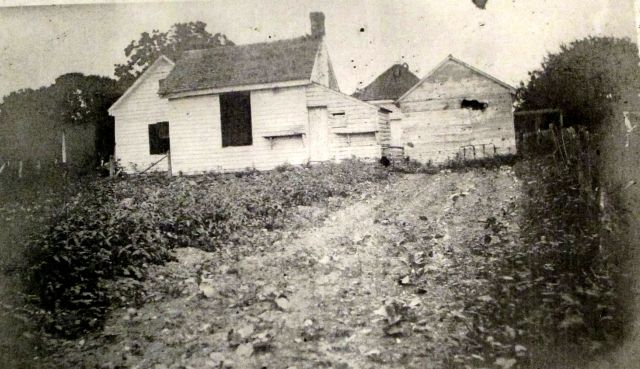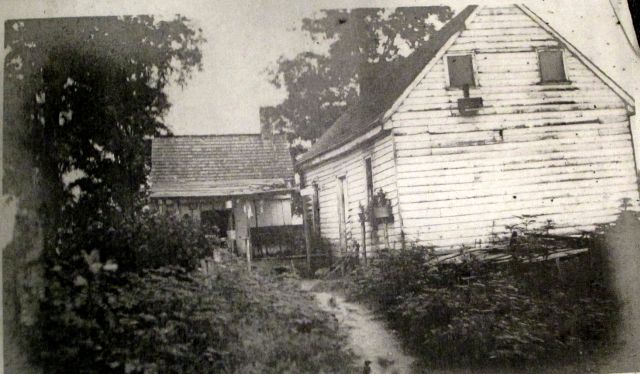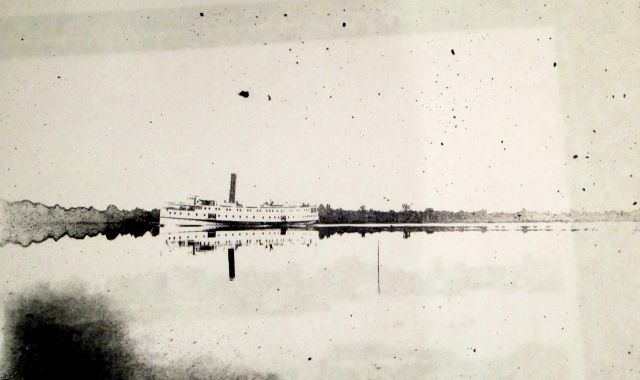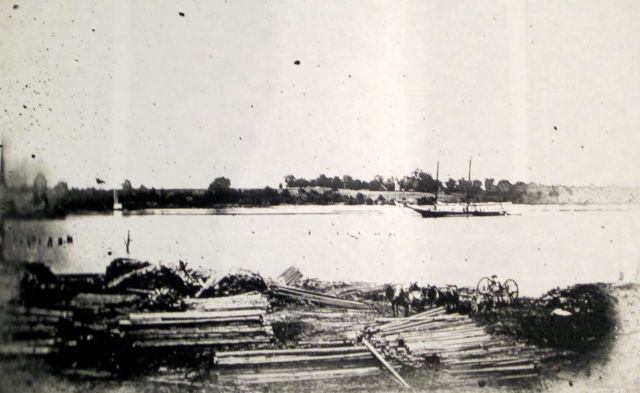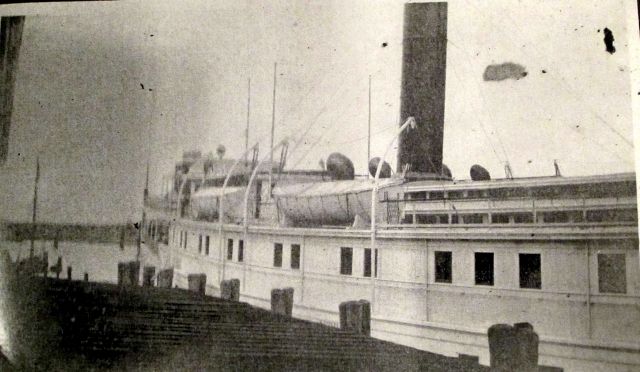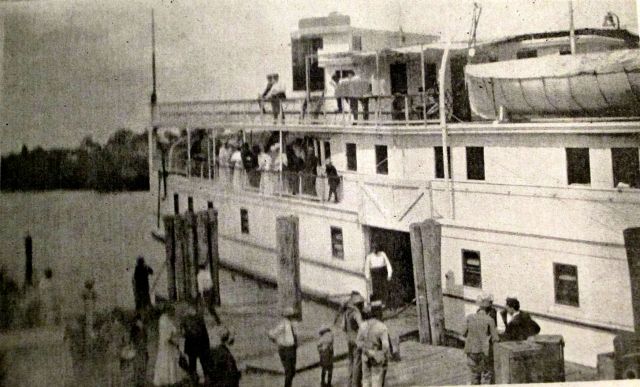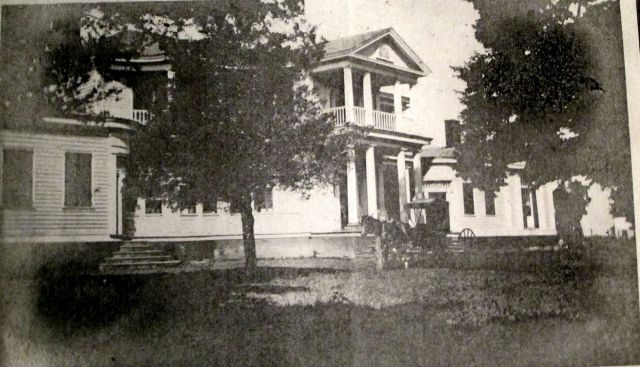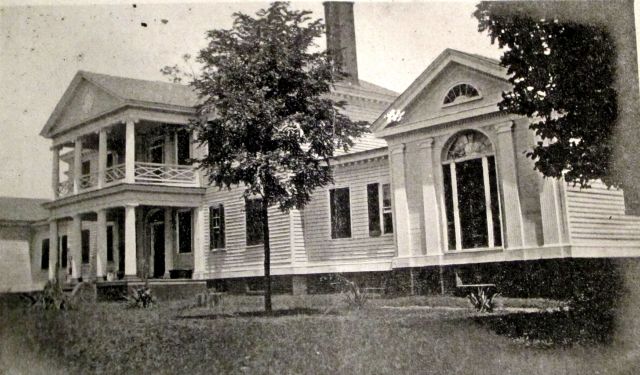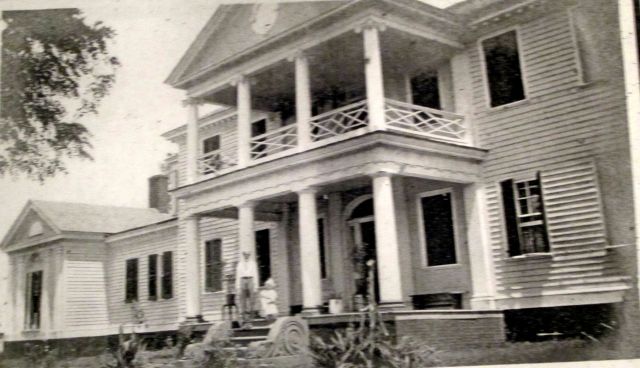Sep. 5th 2012

At the end of the Civil War, Belle Grove once again was involved in another important piece of American history. General Robert E. Lee surrendered the Army of Northern Virginia at Appomattox Courthouse on April 9, 1965. Most consider this the end of the Civil War even though there were still Confederate forces in the field until June 23, 1865 when the last major fighting occurred. On April 14, 1865, John Wilkes Booth shot President Abraham Lincoln. This event set off one of the most famous chases in history.

John Wilkes Booth

David Harold
John Wilkes Booth and his co-conspirator, David Harold spent 12 days on the run traveling through Maryland and Virginia. On April 24th, ten days after the assassination, Lieutenant Edward P. Doherty, leader of the 16th New York Cavalry Regiment received orders to assemble a detachment of twenty-five men and report to Colonel Lafayette C. Baker, Agent of the Department of War who was accompanied by two detectives for the intelligence service; Luther Baker, cousin of Colonel Baker and Everton J. Conger. Everton Conger had been a Lieutenant Colonel for the Union and had suffered three severe wounds during combat. He had been assigned to detached duty in Washington D.C. joining Colonel Baker’s intelligence service. This intelligence service would later become the Secret Service we know today.

Lieutenant Edward P. Doherty

Colonel Lafayette C. Baker

Everton J. Conger
In my research of this pursuit, I have read many accounts of what happened. But just recently I have come across an account that has not received much attention. This account is from a Private who was involved in the pursuit of John Wilkes Booth. In reading his account, he has given me a much better view of the timeline that this detachment spent at Belle Grove. The account I am sharing with you comes from the Portland Journal newspaper by reporter Fred Lockley in three separate installments in early February, 1937. This Private was named John W. Millington. Private Millington was born at Chestertown, N.Y., and enlisted in Company E, 93rd New York volunteer infantry, on December 3, 1861, when he was 18 years old.

Private John W. Millington
PART ONE
“On the morning of April 15, 1865, I was on guard, when news came that President Lincoln had been shot at Ford’s theatre.” wrote Millington. “We were ordered to form part of a cordon to prevent the assassin from escaping. Our company was deployed through the brush. It was a chilly day and a cold rain was falling. A few days later we were ordered to Washington, where we served as an escort at Lincoln’s funeral. We were held in Washington, quartered in the J street barracks. On April 24 I returned from a patrol and put my horse into the stable, leaving him saddled, and fed him and went to the barracks to get something to eat. Before I had finished eating, “boots and saddles” was sounded and there was a rush to the stables. We were ordered to fall in as fast as we led out, disregarding company formation. As my horse was already saddled, I slipped on his bridle, led him out of the stable and mounted. I was next on the left of the sergeant. We were ordered to count off in fours. We went to Pennsylvania Avenue and out 14th street about opposite the old Willard hotel. We halted just in front of the office of Colonel Baker, chief of government detectives and scouts. Our lieutenant, Dougherty, reported, and in a few moments he and two detectives, Lieutenants Conger and Barker, came out and mounted, and the order to march was given. We rode to the wharf of the navy yard, on the east branch of the Potomac, or the Anacostia River, where we took the steamer John S. Ide and started down the Potomac.

Navy Yard Bridge
Lieutenant Dougherty showed us a photograph of Booth and told us he had crossed the Potomac near Port Tobacco.” “We arrived at Acquia Creek and went ashore about 10 o’clock that night. We started scouting through the country, searching all houses and buildings, routing out the inmates and making a thorough search. Next morning early we met some men who had been fishing. They said that a closed hack had passed a few days before, with two men in it. A Confederate captain was in charge, who warned them not to come near. They thought one of the men in the carriage resembled the photograph that we showed them of Booth. We were then on the road to the Rappahannock, toward Port Conway, where we arrived about 2 0’clock. We had not eaten since leaving Washington, so we were told to fall out and rustle some rations. When I returned, with four comrades, we saw some of our company crossing the river in a scow about 20 feet long and 8 feet wide.

Port Conway Ferry House and Post Office (1925)
This ferryboat could hold 10 men with horses, at a trip. In our turn we crossed the river. Mr. Rowlen, owner of the ferry, said he had ferried a carriage a few days previously, and that Captain Jett, formerly of Mosby’s command, was in charge. He believed we would be apt to find him near Bowling Green, about 15 miles from Port Royal, and he volunteered to guide us. Our command was across the river by 4pm and we started. We had traveled about three miles and were approaching the Garrett farm, when we met a man on horseback, who turned and fled. Some of our men pursued, but he escaped in the young pines and as it was nearly dusk he escaped. We arrived at Bowling Green at 11 o’clock that night. We left our horses, with every fourth man counted out to hold the horses. We surrounded the hotel, where we captured Captain Jett. At first he refused to tell us where he had left the two men, but after some forcible persuasion he agreed to show us. He said he didn’t know who they were, except that they were Confederate soldiers who had got into trouble in Maryland and wanted to hide out until the trouble had blown over.”

William Storke Jett
PART TWO
“The ferryman at the Rappahannock told us that Captain Jett of Mosby’s command had crossed with two men in a closed carriage a few days before. Our company arrived at Bowling Green about 11 o’clock that night. We surrounded the hotel and captured Jett, who, after forcible persuasion, agreed to guide us to where the two men were. He said they were Confederate soldiers hiding out on account of some trouble they had got into. He led us back on the road by which we had come, to within about three miles of Port Royal. He pointed out a house some distance from the road.

Garrett’s Farm
We opened the gate carefully and, after surrounding the house, knocked at the door. Garrett came to the door. Asked where the two men were, he said “I know nothing about any men being here.” Our officer said to a trooper, “Untie your picket rope. We’ll hang the old man and see if it will refresh his memory.” “A young man ran from the direction of an outbuilding and asked, “What do you men want?” Our officer said, “We want the two men who are stopping here and at once.” He said, “They’re in the barn.” Part of our company was detailed to surround the barn and part to surround the house. I was with the party sent to the barn. Our lieutenant, who heard some whispering in the barn, called, “Come out at once.” One of the men inside the barn asked, “Who are you?” Our officer said, “It doesn’t make any difference who we are, but we know who you are. You had better come out at once.” “The man in the barn who had done the talking was the man we were after – Booth. He refused to come out. He said, “If you will withdraw your men 30 rods, I will come out and we’ll shoot it out.” We could hear Booth accusing the man who was with him, David E. Harold, of being a coward. Harold was willing to surrender and Booth said, “You’re a coward to desert me.”

David Harold Captured
Finally, Booth called out and said, “Harold will surrender, but I will not.” Our captain said, “Tell Harold to pass out his arms and come out.” Booth said, “Harold has no arms. They belong to me.” “Our officer told Harold to come to the door. He came and as he opened the door Lieutenant Dougherty grabbed him and pulled him out. With a picket rope he tied him to a locust tree, called me and told me to guard him. I said to Harold, “Who was in the barn with you? Was it Booth?” He said, “Yes, Booth is in the barn.” and he added, “Booth told me, when he asked me to help him, that he was going to kidnap Lincoln: he didn’t tell me he was going to kill him.” I said, “When you learned that Booth had killed Lincoln, why did you help him to escape?” Harold said, “Booth threatened to kill me if I didn’t help him get away. Booth came out of the rear of the theatre immediately after shooting Lincoln and we went to Dr. Mudd’s home. After Dr. Mudd had set Booth’s leg we went to Port Tobacco and hid that day. That night we got a fisherman to take us over the river into Virginia. It was so rough that the fisherman said it was unsafe, but Booth told him we had to cross at once and he would kill him if he didn’t take us.” “Once more the officer summoned Booth to surrender. Booth responded, “I’ll fight you single handed, but I’ll never surrender.” Detective Conger went to the opposite side of the barn and lit some loose straw under the sill. I heard a shot and a moment later saw the door was open. Booth had been shot through the neck. They brought him out, carried him to the Garrett house and put him on the porch.

John Wilkes Booth dies on Garrett’s front porch
A soldier was sent to Port Royal for a doctor, who arrived about daylight. Meanwhile, the barn had burned down and some of the men were hunting in the ruins for relics. They found two revolvers and one of our boys got Booth’s carbine. The revolvers were spoiled by the fire. Booth lived about three hours. He was wrapped in a government blanket, his body was placed in a old wagon and a Negro drove the rig to Acquia Creek, which we reached at dusk.”

John Wilkes Booth’s body on the Monitor
PART THREE
“Booth’s body, wrapped in a government blanket, was placed in a wagon, which was driven by a Negro,” Millington wrote. “When Booth was carried from the barn to the porch he was unconscious, but presently came to, and when a doctor who had been called tried to give him some medicine, he shook his head and said it was useless. Booth then added, “Tell my mother that what I did I did for the good of the country.” “The two Garrett boys had returned home shortly before we got there. They had been with Mosby’s command. One of them had a young wife and there was a tearful scene when our officer told the boys they would have to go to Washington with us. Captain Jett was allowed to escape. I understood at the time that if he guided us to Booth and Harold he would not be held.” “When we arrived at Acquia Creek we went aboard a vessel. I was ordered to stay in the cabin and guard Harold. Another trooper was stationed outside the door. Harold was soon sound asleep on the floor. When I was relieved, I was cold, as I had no overcoat, so I went below and lay down near the boiler and slept until we arrived near one of the monitors at Washington. After we were made fast, the lieutenant ordered me to help carry Booth’s body aboard the monitor. We laid his body on the deck. I was tired and hungry and much more interested in getting to barracks for a good meal and a good sleep than knowing what was to become of Harold and Booth’s body. I stabled my horse and went at once to my bunk. When I awoke, about 10 o’clock, the papers had long articles about the killing of Booth and the capture of Harold.”
In the account, Private Millington wrote “We were then on the road to the Rappahannock, toward Port Conway, where we arrived about 2 0’clock. We had not eaten since leaving Washington, so we were told to fall out and rustle some rations.” This statement confirms the information I had uncovered that the detachment had made a stop at Belle Grove. In my information, the detachment had split up in King George to form to search parties. It was at Port Conway and Belle Grove that they met back up. My information stated that half of the detachment had gone to another plantation (most likely Walsingham Plantation) and the other half had come to Belle Grove. Everton Conger was with the detachment at Belle Grove. Due to his severe wounds that he had received during the Civil War, traveling on horseback had taken a toll on Lieutenant Conger. He was allowed to sleep in the main hallway at Belle Grove.

Site of Garrett’s Farm
No house or farm remains, just woods
It wasn’t until I read this account that I knew for sure the amount of time they spent here. From the account, it looks as if they were in Port Conway for about 2 hours. More than likely Everton Conger was one of the last to leave Port Conway, allowing him time to rest.

View of where Port Conway Ferry should have been
The ferry that Private Millington spoke about is the ferry located at Port Conway. I am still doing research on the ferry owner, Rowlen. I am not sure if that is the correct spelling or not yet. But I do know that where the ferry was at Port Conway is now a wooded area about 100 yards up river from the present day James Madison Bridge. Thanks to Carolinus Turner, that location is now part of Belle Grove Plantation.
